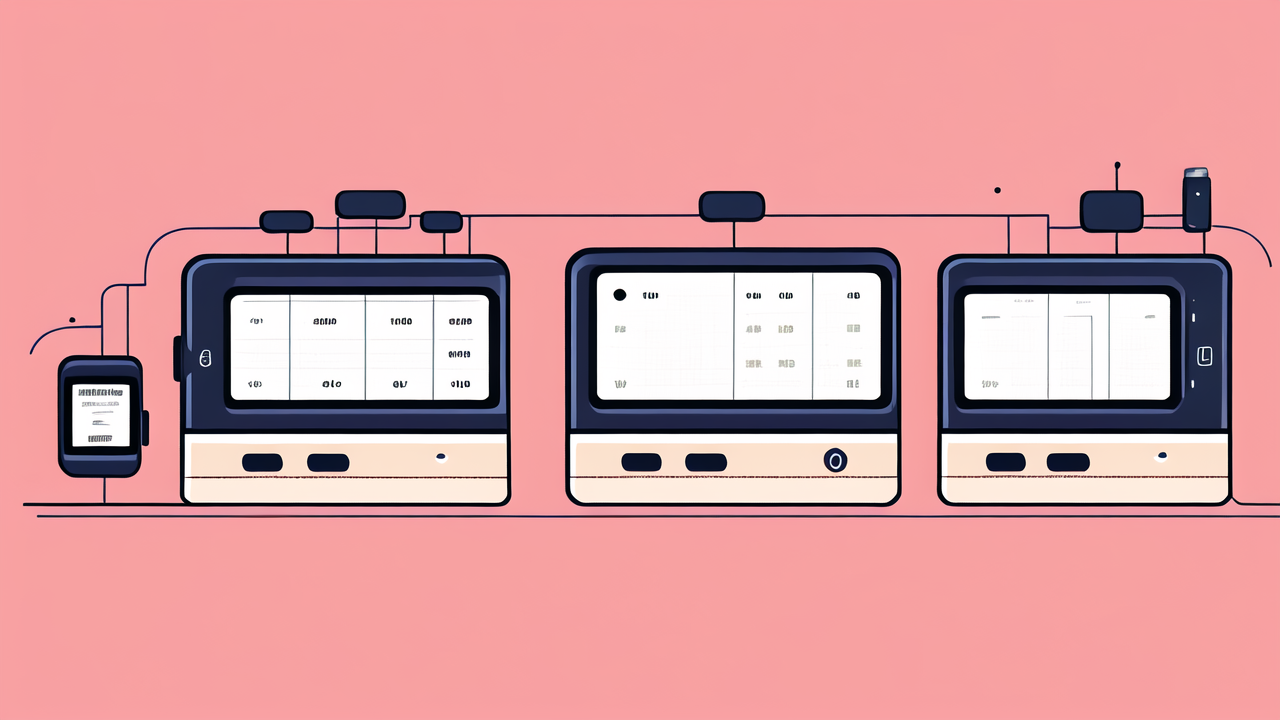The History of Wearable Technology: A Journey Through Time
The Origins of Wearable Devices
Wearable tech has come a long way since its early days. It all started with simple devices like calculators on watches. These were the first steps towards merging technology with everyday items we wear.

In the 1970s, digital watches became popular. They were a big deal because they showed the time with numbers, not hands. This was just the beginning of what wearables could do.
As time went on, more features were added to these devices. Things like stopwatches and alarms became common. These early wearables set the stage for the smart devices we use today.
Milestones in Wearable Technology Development
The 1980s saw the birth of portable music players. The Walkman changed how we listen to music on the go. It was a big step for wearable tech.
In the 1990s, mobile phones became smaller and more portable. This led to the idea of always-connected devices. It was a key moment in wearable tech history.
The 2000s brought us Bluetooth headsets. These allowed hands-free calling. It was another step towards tech that seamlessly fits into our lives.
GPS watches came next. They helped runners and hikers track their routes. This was the start of using wearables for fitness.
How Fila Watches Paved the Way
Fila, known for sports gear, played a role in wearable tech too. In the 1990s, they made digital watches for athletes. These watches had features like timers and lap counters.
Fila watches were sturdy and meant for active use. They showed that tech could be both useful and stylish. This idea is key in today's smartwatches.
These watches helped people see wearables as more than just gadgets. They became fashion statements too. This blend of style and function is still important in wearables today.
Current Trends in Wearable Technology
The Rise of Smart Watches and Wearables
Smart watches are now everywhere. They do much more than tell time. They can show messages, track health, and even make calls.

Apple Watch and Fitbit are leading brands. They offer a range of features for different needs. From fitness tracking to mobile payments, these devices do it all.
Other wearables like smart rings and clothing are also gaining popularity. They offer new ways to interact with tech. The trend is moving towards smaller, more discreet devices.
Innovations in Health and Fitness Tracking
Health tracking is a big focus in wearables now. Devices can monitor heart rate, sleep patterns, and stress levels. This data helps users make better health choices.
Fitness trackers have become more advanced. They can now detect different types of exercise. Some can even give workout suggestions based on your goals.
- Heart rate monitoring
- Sleep tracking
- Stress level detection
- Step counting
- Calorie burn estimation
- Workout detection and suggestions
These features make wearables valuable tools for personal health management. They're like having a fitness coach on your wrist.
The Integration of AI and Machine Learning
AI is making wearables smarter. Machine learning helps devices understand user patterns. This leads to more personalized experiences.
Voice assistants like Siri and Google Assistant are now on many smartwatches. They can help with tasks hands-free. This makes wearables even more convenient.
AI also improves health tracking accuracy. It can spot patterns that might signal health issues. This turns wearables into proactive health tools.
The Future of Wearable Technology in the United States
Projected Growth and Consumer Adoption
The wearable tech market is set to grow fast in the US. More people are seeing the value in these devices. Smartwatches and fitness trackers are leading this growth.

Experts predict a big increase in wearable use over the next few years. This includes not just watches, but also smart clothing and health devices.
As prices come down and features improve, more people will buy wearables. They're becoming as common as smartphones in many people's lives.
Regulatory Considerations and Privacy Concerns
With more data being collected, privacy is a big concern. The US is looking at ways to protect user data from wearables. This includes rules about how companies can use and share this info.
Health data is especially sensitive. There are strict laws about how it can be used. Wearable makers must follow these rules to protect users.
Users are also becoming more aware of privacy issues. They want control over their data. This is pushing companies to be more transparent about data use.
The Potential Impact on Various Industries
Wearables are changing many industries. In healthcare, they're helping with remote patient monitoring. This could lead to better care and lower costs.
The fitness industry is using wearables to offer personalized training plans. Gyms and trainers can use data to tailor workouts to each person.
In retail, wearables might change how we shop. Contactless payments through smartwatches are already common. In the future, we might see more personalized shopping experiences based on wearable data.
Education could also benefit. Wearables might track student engagement or help with hands-on learning. The possibilities are vast and exciting.




Leave a comment
This site is protected by hCaptcha and the hCaptcha Privacy Policy and Terms of Service apply.